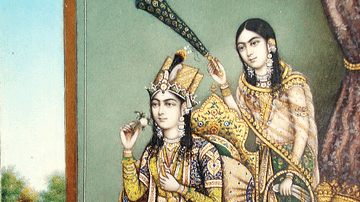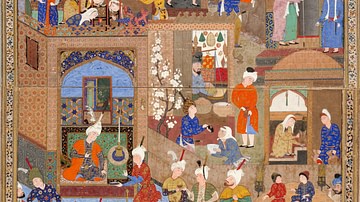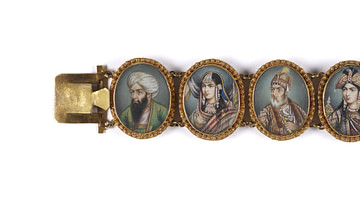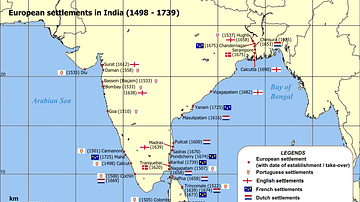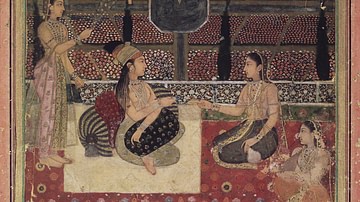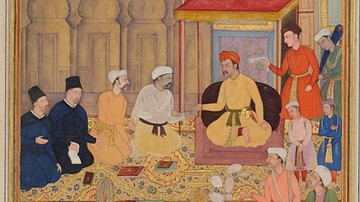Server Costs Fundraiser 2024
Video
In this short film, Emily Hannam discusses a pair of mid-seventeenth century paintings by the Mughal court artists Bichitr and Ramdas from the most famous South Asian manuscript in the Royal Collection, the Padshahnama (‘Book of Emperors’). Bichitr and Ramdas worked for the Mughal emperor Shah-Jahan (r.1628-58). By decoding the symbolism of the paintings, Emily explains how Shah-Jahan commissioned his artists to create paintings that celebrated the glory of his reign and dynasty. Through close visual analysis, she explores the materials, techniques and compositional frameworks that Bichitr and Ramdas employed to make manifest Shah Jahan’s imperial ideal of the Mughal state.
Cite This Work
APA Style
OpenArtsArchive. (2023, November 15). Mughal Miniature, the Padshahnama. World History Encyclopedia. Retrieved from https://www.worldhistory.org/video/3071/mughal-miniature-the-padshahnama/
Chicago Style
OpenArtsArchive. "Mughal Miniature, the Padshahnama." World History Encyclopedia. Last modified November 15, 2023. https://www.worldhistory.org/video/3071/mughal-miniature-the-padshahnama/.
MLA Style
OpenArtsArchive. "Mughal Miniature, the Padshahnama." World History Encyclopedia. World History Encyclopedia, 15 Nov 2023. Web. 26 Jul 2024.
